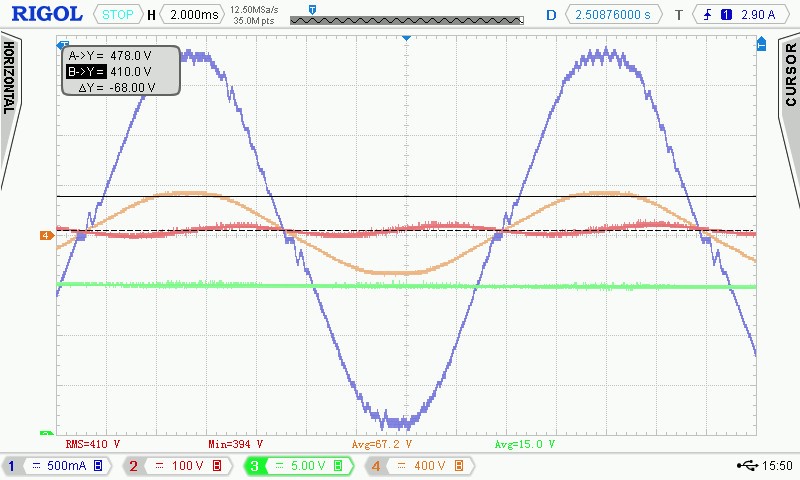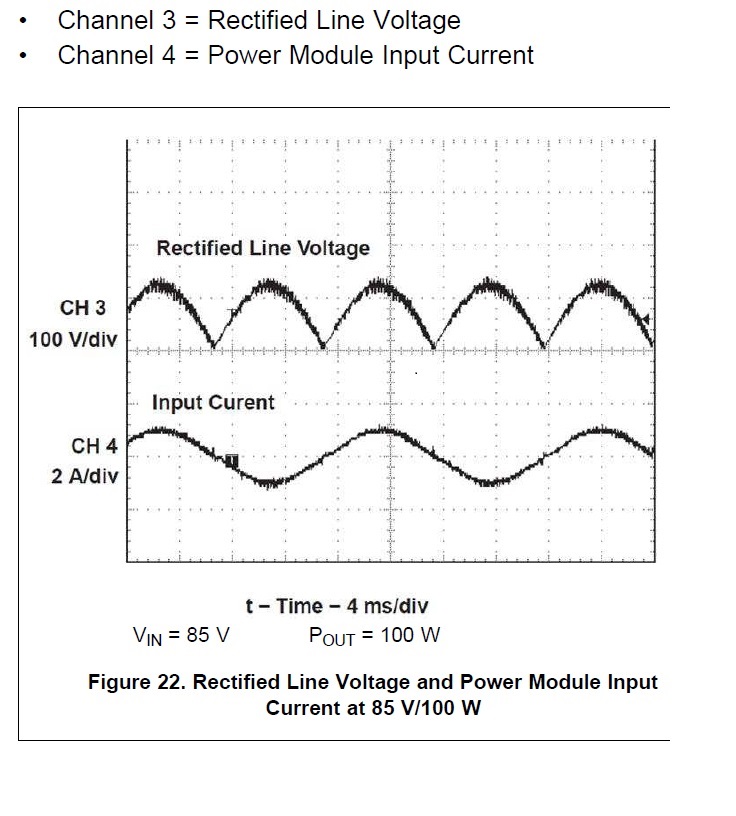Other Parts Discussed in Thread: UCC28050, UCC38050
I am trying to use the UCC28051 as a replacement PFC control IC in a product that was originally developed for the now obsolete On Semiconductor MC34262 PFC control IC.
The basic functionality seems Okay but I am getting some ripple current superimposed on the fundamental AC line current.
The ripple frequency is approximately 3kHz. See the oscilloscope capture below.
CH1 = AC line current, CH2 = DC output voltage, CH3 = Vcc for the UCC28051, CH4=AC line voltage
Note: this measurement was taken with the PFC operating at approximately 350Watts output and the AC supply was connected via a Variac and Isolation transformer.
So the actual amount of 3kHz ripple current shown below is less than it would be when connected directly to the AC mains.
This 3kHz ripple current did not exist with operating with the On Semi MC34262
My initial impression was that this was some type of instability resulting from incorrectly matched filters for the Pin2 and Pin3 inputs to the UCC28051 however I have spent several days working on numerous different combinations and nothing seems to reduce the 3kHz ripple current.
The only thing that I have found so far that reduces the 3kHz ripple current is drastically reducing the peak voltage at Pin3 (multiplier).
If I reduce the Pin3 input voltage low enough so that the Pin2 output voltage approaches the saturation limit then the 3kHz ripple will decrease, this approach reduces the ripple by about 50% however this drastic a reduction in multipler voltage creates other issue so by itself is not a viable solution.
Is it normal for the UCC28051 to have this type of kilohertz range ripple current? It is difficult to tell based on the resolution of the oscilloscope pictures in the datasheet ( below)
If not do you have any suggestions regarding how to reduce/eliminate it?
Best Regards,
Jeff Ferrick





